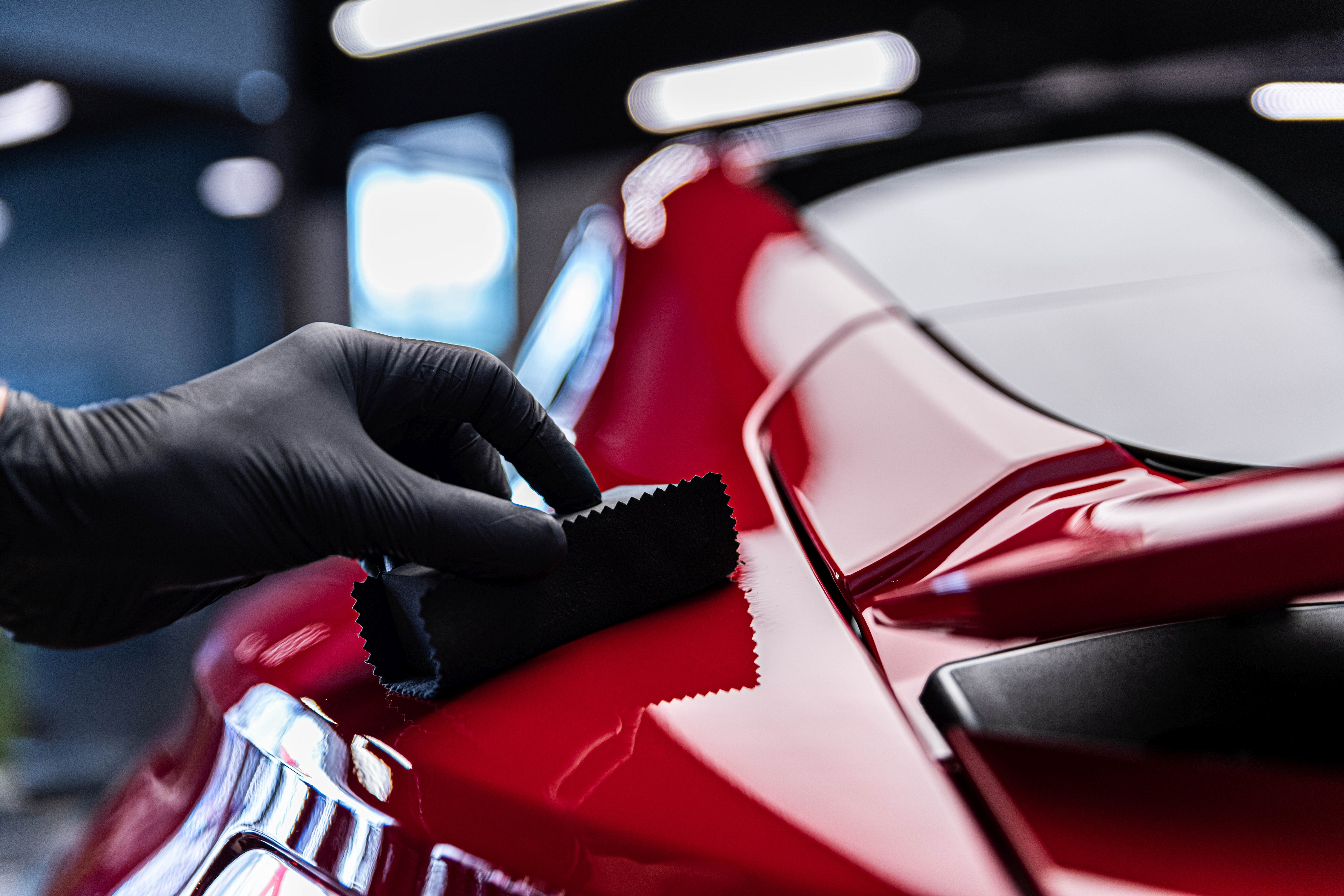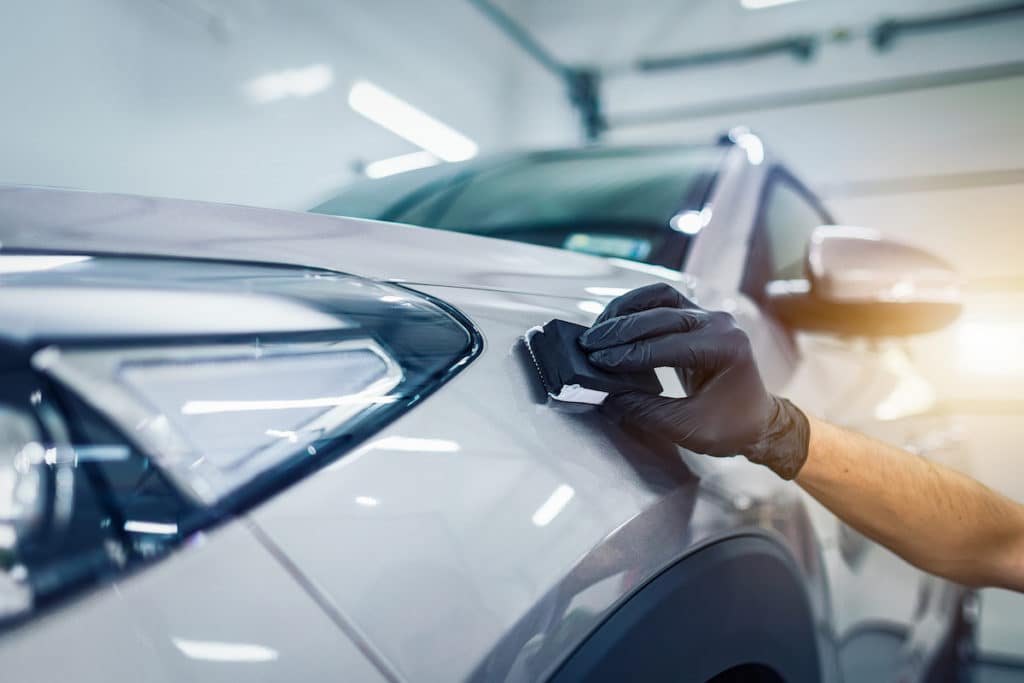Choose expert-installed paint protection film for a ultra-clear layer of protection.
A Comprehensive Overview to the Sorts Of Ceramic Coating on the Market
Ceramic finishings have actually arised as an essential remedy throughout different industries due to their unique residential properties and applications. As we discover the distinct features and applications of these finishes, the effects for efficiency and longevity come to be increasingly apparent, elevating inquiries concerning which kind might ideal suit your demands.
Understanding Ceramic Coatings
Ceramic coverings are sophisticated safety solutions that have obtained appeal in different markets, especially in automobile and aerospace applications. These coverings are composed of a fluid polymer that, when healed, develops a long lasting, hydrophobic layer externally of the substratum. This layer provides enhanced resistance to environmental contaminants, UV radiation, and chemical exposure, therefore extending the life and aesthetic charm of the underlying material.
The essential component of ceramic coatings is silica, which adds to their hardness and durability. The application procedure typically involves surface preparation, application of the covering, and curing, which can be accomplished with warm or UV light. As soon as treated, ceramic coatings show extraordinary bonding homes, permitting them to adhere strongly to a range of surfaces, including steels, plastics, and glass.
In enhancement to their safety attributes, ceramic layers also provide simplicity of maintenance. Their hydrophobic nature lowers the adherence of dirt and crud, making cleaning less complex and less constant. Generally, the adoption of ceramic finishings represents a considerable development in surface area protection innovation, providing both practical and visual benefits throughout multiple sectors.
Kinds Of Ceramic Coatings
Various sorts of ceramic layers are readily available, each designed to satisfy details performance requirements and applications - scratch repair sarasota. One of the most usual types include:
Silica-based Coatings: These layers largely contain silicon dioxide and are understood for their resilience and chemical resistance. They are commonly used in auto and industrial applications.
Titanium Dioxide Coatings: Popular for their photocatalytic homes, titanium dioxide coverings are frequently applied in atmospheres where self-cleaning and antifungal residential or commercial properties are desirable, such as in building materials and automobile finishes.
Zirconia Coatings: Defined by their high-temperature security and thermal resistance, zirconia coatings are utilized in applications such as turbine engines and high-performance automobile elements.
Alumina Coatings: Displaying superb solidity and thermal security, alumina layers are frequently used in wear-resistant applications, consisting of cutting devices and commercial equipment. - Auto Detailing
Crossbreed Coatings: Integrating the buildings of various materials, crossbreed finishings provide improved efficiency features, making them ideal for distinct and demanding applications.
Each kind of ceramic finishing offers distinctive purposes, allowing customers to select one of the most suitable solution based upon particular ecological conditions and performance needs.
Advantages of Ceramic Coatings
Coatings play a crucial duty in boosting the performance and long life of surface areas across various markets. Ceramic finishes, specifically, offer many advantages that make them increasingly preferred amongst producers and consumers alike. Among the main advantages is their phenomenal durability. These coverings are resistant to scrapes, chemicals, and UV rays, making certain that the underlying surface area remains safeguarded in time.
In addition to toughness, ceramic coverings give exceptional hydrophobic homes, enabling easy cleansing and upkeep. This water-repellent nature minimizes the adherence of dust, gunk, and various other pollutants, which can extend the aesthetic charm and functionality of the surface area. Ceramic coverings can considerably enhance thermal resistance, you can look here making them excellent for applications that withstand high temperature levels.

Application Refine
When applying ceramic coatings, a precise technique is vital to accomplish optimum results. The application procedure generally begins with detailed surface preparation. This involves cleaning, sanitizing, and polishing the surface to eliminate all contaminations, including dirt, grease, and prior waxes or sealers. A tidy surface makes sure proper adhesion of the finish.
Once the surface area is prepped, the following step is to use the ceramic finish. The coating should be used in thin layers, as thicker applications can lead to uneven coatings.
After application, the finish calls for a certain curing time, generally varying from a few hours to a full day, depending on the product. Adhering to these steps carefully will take full advantage of the effectiveness and longevity of the ceramic layer, giving a sturdy safety layer for the surface.
Upkeep and Long Life
To ensure the durability and efficiency of a ceramic finishing, regular upkeep is important. Ceramic finishings, understood for their toughness and protective top qualities, need particular treatment regimens to maximize their lifespan and efficiency.
Along with regular washing, regular inspections are crucial. Try to find indicators of wear or site damage, such as hydrophobic residential or commercial properties lessening or surface blemishes. If necessary, a light gloss might be put on revitalize the coating without removing it away.
In addition, the application of a booster spray can enhance the covering's hydrophobic results and restore its gloss. This is especially valuable for finishes that have actually been in use for a prolonged duration. Inevitably, by adhering to these upkeep methods, one can dramatically prolong the life of a ceramic finish, ensuring that it proceeds to supply ideal protection against Continued environmental factors and maintain the aesthetic appeal of the vehicle.
Final thought
